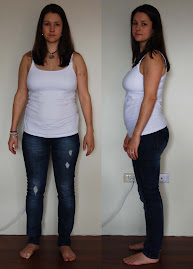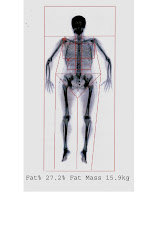I'm always excited to get emails with questions like this - Exercising when pregnant can be extremely beneficial to both mother and baby (in a 'normal', complication free pregnancy) Here's the question I received and my answer....
Q: What sort of exercise can one do when pregnant?? Or rather, what do I need to avoid? I'm only about six weeks so it's very early on. I've always had easy pregnancies but never really exercised and I didn't get back into decent exercise until after my second baby. I obviously don't want to stop but am assuming I need to take some sort
of care? What do you think?
A: The first thing to keep in mind when
exercising during pregnancy is that safety is key. In most cases if you
have been exercising prior to falling pregnant and have no
complications or contraindications then you may continue to exercise
during your pregnancy. Some alterations will need to be made to your resistance program especially as the pregnancy progresses.
A
non-exerciser who decides to take up resistance training during
pregnancy should be more cautious and take things slowly and steadily -
most preferably under the guidance of a trainer experienced in prenatal
exercise.
There are various benefits to exercising during pregnancy and these include:
- More comfort due to increased strength - in both everyday life and during delivery
- The ability to continue to perform day to day activities - as the pregnancy progresses and your body weight increases the muscular endurance and strength gained from resistance training helps make everyday tasks easier, including the lifting and carrying of growing toddlers
- Reduced back ache - from increased back strength and improved posture
- Easier post birth recovery - and return to resistance exercise along with a more positive self image
However, as we have already mentioned there are a few guidelines to follow:
- Training should be of low to moderate intensity - use your individual training history as a guide. If you have been training to a higher intensity previously your relative training intensity during pregnancy will be higher than that of a woman who didn't exercise previously. As a guide choose a weight which you can lift for 12-15 reps.
- Allow yourself an extended rest between sets - to allow your heart rate to recover. We used to focus on a maximum heart rate of 140bpm but these guidelines were removed in 1996 and the Perceived Rate of Exertion (PRE) scale more highly recommended. Your heart rate can vary quite significantly at different stages in your pregnancy so a heart rate monitor is not the best guideline. Knowing your body, being in tune with how you feel and adapting your workout accordingly is the best way to go.
- Holding your breath should be avoided at all times
- Stop doing all 'crunching', strong twisting or specific Rectus Abdominal exercises - as you may know from your first pregnancy the Rectus Abdominals may be forced to separate as your belly grows so stopping doing any specific strengthening exercises for this layer of tummy muscles can help to reduce the severity of any separation. Continuing to do your Transverse Abdominal exercise (Inner Core) is highly recommended.
- Train for maintenance rather than gain - as a rule of thumb on a PRE scale with 1 being 'sitting on the couch doing nothing' and ten being 'working as hard as you possible can' you should be sitting no higher than a 7/10.
- Be aware of decreased joint strength due to increasing levels of the hormone Relaxin - which can lead to a greater chance of strains and stresses. Be very careful if lifting weights above your head, choose lighter weights as a rule and be aware of increased mobility through the shoulder joints. The muscles around the hips and pelvis also become more relaxed in preparation for child birth so care should be taken when performing lunges - if you haven't done them before now is not the time to start and even seasoned gym goers should be aware of any pelvic or pubic pain. Leg strengthening exercises such as squats are more preferable at this time.
In short, resistance training during a normal
pregnancy carries more potential benefits than risks and doesn't even
require a gym membership to do it. Using resistance bands and tubing
are a great tool which can be used at home or in the park (whilst your
toddler is on the swings) and are very light and easy to carry - no
excuses!
Enjoy your resistance training throughout pregnancy and
the benefits it bring with it.

























1 comment:
Thank you for your response han smith - would you like to expand further or can I help you at all in regards to abdominal exercise?
Post a Comment